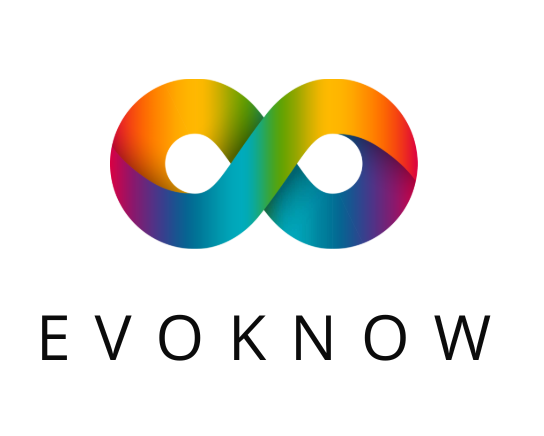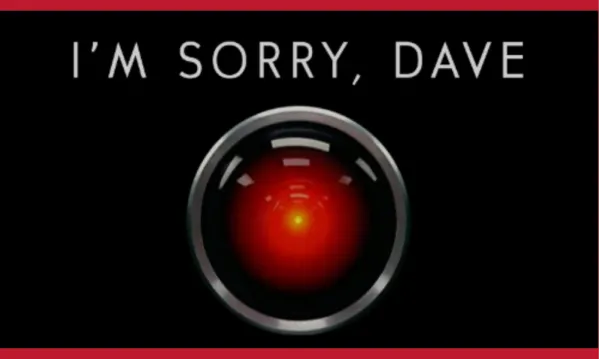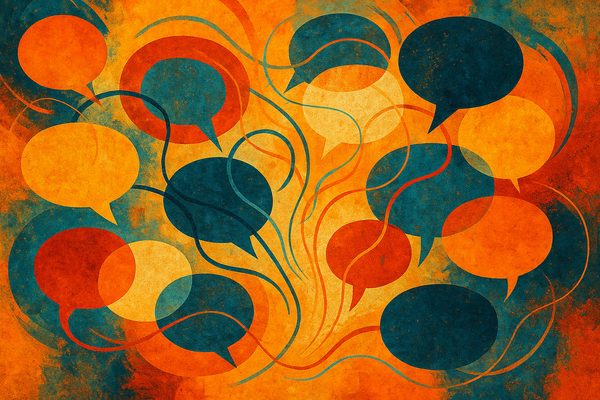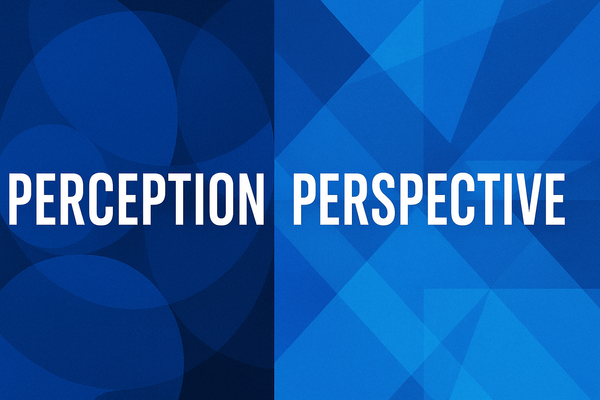GPT-5 vs. Claude Opus 4.1
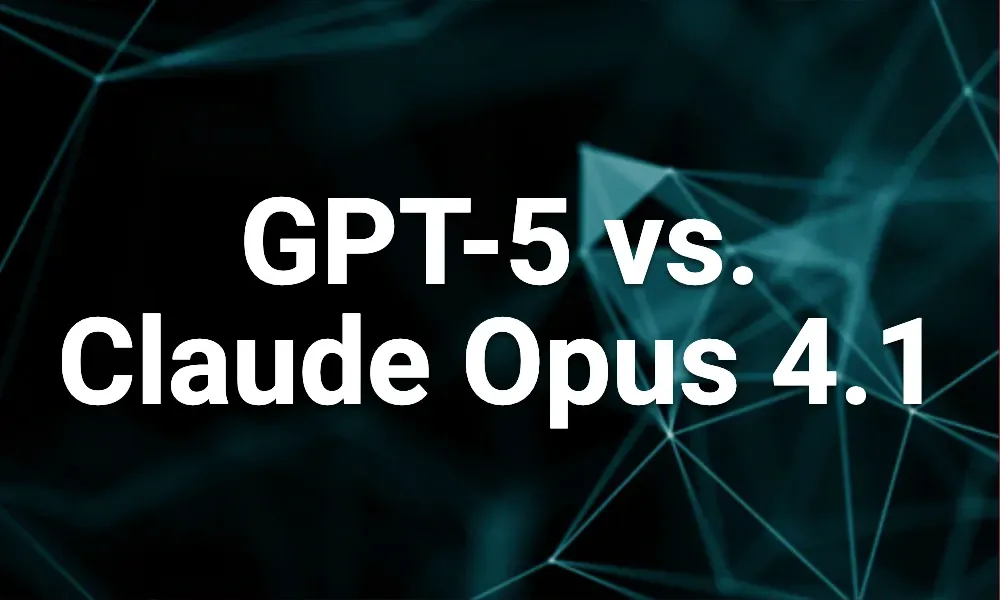
The summer of 2025 has marked a pivotal moment in the artificial intelligence landscape with the near-simultaneous release of OpenAI's GPT-5 on August 7, 2025, and Anthropic's Claude Opus 4.1 on August 5, 2025. These new models represent significant advancements, promising to redefine human-computer interaction and fundamentally transform various industries, particularly in software development. The intense competition between tech giants is driving innovation at breakneck speed, making the choice of AI crucial for optimizing productivity and return on investment.
GPT-5
The Unified AI Revolution
OpenAI's GPT-5 positions itself as a monumental leap in AI capabilities, aiming to eliminate the need for specialized models for different tasks through a unified, intelligent system. This revolutionary approach automatically adapts to the complexity of a user's request, effectively democratizing AI by removing the technical barrier of model selection.
The model introduces groundbreaking multimodal capabilities that build on GPT-4o's real-time text, image, and voice processing. GPT-5 takes this further by incorporating native video and audio processing, allowing for seamless understanding and generation across various content types. This enables applications like detailed video summarization and automated content creation that were previously impossible or required multiple specialized tools.
In the realm of coding, GPT-5 demonstrates advanced programming abilities that can process entire codebases, offer detailed feedback on architectural impacts, generate unit and integration tests, and assist with error detection and debugging. The model reportedly handles complex coding tasks with minimal prompting, making it accessible to developers of varying skill levels.
Perhaps most impressively, GPT-5's agentic functionality allows it to move beyond basic assistance to become an autonomous agent capable of task execution, service integration, and workflow automation. It can complete tasks independently by connecting with external tools and APIs, browsing websites, filling forms, and performing multi-step operations with minimal user input. This represents a fundamental shift from reactive AI assistance to proactive AI collaboration.
The model features an expanded context window anticipated to handle over 32,000 tokens, with speculation reaching up to 256,000 or even 1 million tokens. One source mentions a 272,000 input token and 128,000 output token context window. This massive capacity allows for more coherent discussions, deeper memory retention, and the ability to process large documents or entire codebases without losing context.
OpenAI has also focused on structured reasoning and reduced hallucinations, emphasizing multi-step logic and decision-making for more reliable responses, particularly in factual and analytical domains. The company claims spectacular progress in reliability, with 45% fewer errors compared to GPT-4o with web search and 80% fewer errors compared to o3 in thinking mode. GPT-5 reportedly achieves hallucination rates under 1% on open prompts and 1.6% on hard medical cases.
The model introduces native personalization through four integrated personalities: Cynic, Robot, Listener, and Nerd. These personalities automatically adapt to context without complex prompt engineering, making interactions more natural and contextually appropriate.
Finally, GPT-5 offers game-changing integrations with services like Gmail and Google Calendar, allowing it to function as a personal assistant with complete contextual awareness of emails, priorities, and schedules. GPT-5 is available in variants such as gpt-5, gpt-5-mini, gpt-5-nano, and gpt-5-chat, each optimized for different use cases and cost considerations.
Claude Opus 4.1
The Technical Excellence Standard
Anthropic's Claude Opus 4.1 presents itself as the absolute technical reference, particularly excelling in programming and complex analysis. This model is available to Claude Pro users, Claude Code subscribers, and developers via API, Amazon Bedrock, or Google Cloud's Vertex AI.
The model's dominance in development benchmarks is perhaps its most impressive feature, scoring an industry-leading 74.5% on SWE-bench Verified, a benchmark for real-world coding problems. This compares to 60% for ChatGPT-5 (general) or 74.9% for GPT-5 (Thinking). This superior performance translates to an exceptional capacity to analyze and debug complex codebases with surgical precision, identifying necessary corrections without superfluous modifications.
Claude Opus 4.1 introduces revolutionary extended reasoning capabilities, allowing it to "think" up to 64K tokens while breaking down reasoning into clear logical steps. This maintains coherence over very long conversations, making it ideal for in-depth exchanges without loss of information. The model also supports 32,000 output tokens, enabling comprehensive responses to complex queries.
The model's optimal use cases center around enterprise development, including legacy code refactoring, microservices architecture, and critical systems debugging. For analytical work, it excels in multi-source syntheses, academic research, and code security audits, demonstrating a level of precision that makes it invaluable for mission-critical applications.
From a developer ROI perspective, measured savings suggest 5-10 hours per week in debugging for developers, translating to a remarkable 25-50x ROI for a $20/month investment. This exceptional return on investment has made Claude Opus 4.1 increasingly popular among professional development teams.
Anthropic has also emphasized safety improvements with Claude 4.1 operating under their AI Safety Level 3 standard. The model shows improved harmlessness, refusing policy-violating requests 98.76% of the time (up from 97.27%) with no significant regression in bias or child safety measures.
The Claude Code ecosystem offers specific developer features through a subscription service. This includes continuous code review, security vulnerability scanning, and IDE integration. Notable features include "Memory Files" for local context retention and "Artifacts" for real-time code visualization, creating a comprehensive development environment.
The Coding Performance Battle
While OpenAI markets GPT-5 as the "best coding model," real-world experiences and benchmarks reveal a more nuanced picture that varies significantly depending on the specific use case and development context.
Benchmark Performance shows an interesting dynamic. On SWE-bench Verified, Claude Opus 4.1 scores 74.5%, excelling particularly in multi-file Python workflows and precise bug fixes, while GPT-5 achieves 74.9% specifically in thinking mode. Many consider this a statistical tie. However, on Aider Polyglot, GPT-5 leads with 88% when using chain-of-thought reasoning across diverse languages like JavaScript, Python, and C++, though Claude Opus 4.1 is consistently praised for producing cleaner, more reliable code across languages.
Project Complexity reveals where each model truly shines. Many users find Claude Opus superior for complex from-scratch projects and understanding existing codebases, handling context better and proving more reliable in complex tasks without needing excessive context prompting. One user described Claude as the "single best model" for coding. For simpler tasks like basic features and bug fixes, GPT-5 holds its own and often excels due to its speed and versatility.
Debugging Capabilities show perhaps the starkest difference between the models. Claude is widely noted for its surgical precision in debugging, identifying exact corrections without superfluous modifications. GPT-5 has been reported to struggle with fixing bugs, sometimes actively breaking working parts of code or missing features it claimed to implement. However, some users found GPT-5 better at fixing specific visual React node issues that Claude struggled with, and better at identifying bugs Claude missed. GPT-5 also reportedly forgets fewer specific details like #includes in C++.
Code Quality and Readability consistently favor Claude, which tends to provide more readable code out of the box. Users frequently report that GPT-5's generated code can be very difficult to read, requiring additional cleanup and refactoring.
Generalization Abilities reveal another interesting distinction. Claude Opus has demonstrated an remarkable ability to "learn" rules and write working code for niche, low-code platforms and scripting languages that LLMs were likely not trained on, effectively generalizing beyond its training set. GPT-5, in contrast, appears excellent at popular stacks like NextJS but struggles to generalize in less common territories.
Planning versus Execution shows complementary strengths. GPT-5 is often considered superior at planning out tasks before execution, while Claude excels at the actual implementation. Many developers have adopted a workflow using GPT-5 for planning and Claude for execution, or using ChatGPT to plan, then Claude to translate it into a detailed plan and task list, with Claude handling the actual building phase.
Despite GPT-5's marketing claims, many developers continue to prefer Claude for coding, with one user noting that "coding is still better in Claude," despite some models not reaching the same benchmarks. Some users experienced GPT-5 actively disrupting web server configurations and Linux commands, which Claude was able to resolve quickly.
API Pricing and Cost Considerations
API pricing represents a significant factor, especially for high-volume projects, and here the models show dramatically different value propositions.
GPT-5 Pricing positions itself as highly cost-effective, with the base model priced at $1.25 per million input tokens and $10 per million output tokens. Its variants (mini, nano) are even cheaper, with GPT-5's Nano tier setting a new floor for pricing with inputs as low as $0.05 per million tokens and outputs at $0.40. For a typical usage pattern of 1 million input tokens and 100,000 output tokens, the cost would be $2.25.
Claude Opus 4.1 Pricing reflects its premium positioning, at $15 per million input tokens and $75 per million output tokens. The same usage pattern would cost $22.50, making it significantly more expensive than GPT-5.
This pricing difference makes GPT-5 far more cost-effective for high-volume API calls, while Claude's premium pricing is often justified by enterprise users who prioritize precision and reliability. However, some developers argue that GPT-5 isn't "that" much cheaper than Opus in practice due to the greater number of reasoning tokens it requires, which affects context length and increases costs. Despite the higher cost, many developers find the return on investment for Claude Opus 4.1 to be substantial, saving significant work hours that more than compensate for the price difference.
Community Sentiment
Real-World Usage
User experiences with both models, particularly concerning their command-line interfaces and practical applications, reveal distinct preferences that often contradict marketing claims.
Claude Code CLI Experience generates overwhelmingly positive feedback from users who express a strong preference for Claude Code in the terminal due to its granular control. It's considered "infinitely better than Codex CLI" and users appreciate its ability to maintain contextual, steerable interactions for specific development needs. Claude Code is frequently described as the "gold standard" for AI agents and the "best rubber ducky and second set of eyes" for projects.
Codex CLI Experience faces widespread criticism, with the interface being described as "garbage" or "sucks" by numerous users. Major issues include reading files in small chunks (200 lines), which confuses the model and drives up billing costs. Many suggest that GPT-5's performance issues might stem from the poor quality of the Codex CLI wrapper rather than the model itself. Some users found GPT-5 in Cursor (another IDE) to be much more capable than in Codex CLI.
Reliability and Hallucinations present ongoing challenges for both models, though with different characteristics. While all LLMs hallucinate, GPT-5 has been noted for significant hallucination problems, claiming fixes it hasn't made and leaving users with "a mess of new files and disjointed garbage." Claude also makes mistakes, but after extensive testing across different scenarios, users generally find that Claude handles context better and makes fewer destructive errors.
Market Reception shows a notable gap between expectations and reality for GPT-5. Many users found GPT-5 underwhelming or overhyped, especially compared to their high expectations following OpenAI's marketing. Some described it as "dogwater" for coding and a "major disappointment." This contrasts with Claude's reception, which generally meets or exceeds user expectations for coding tasks.
Industry Specialization trends suggest that major AI labs will likely focus on their strengths. Claude is increasingly seen as "blowing everyone else out of the water on coding," leading many to suggest it should lean into that specialty. OpenAI is perceived as focusing more on consumer-facing AI applications or developing an "AI friend" experience rather than specialized developer tools.
Industry Impact and Transformation
The release of GPT-5 and Claude Opus 4.1 represents more than incremental upgrades; they signal a paradigm shift with profound implications across multiple industries.
Technology Winners include cloud computing providers like Microsoft and Amazon, who benefit from increased compute demand. Software development tools and platforms such as GitHub and GitLab gain enhanced capabilities for integration. AI-native application developers find new opportunities to create previously impossible applications. Content creation and media companies like Adobe can leverage advanced multimodal capabilities, while customer service and CRM providers like Salesforce and Zendesk can offer more sophisticated automation.
Healthcare Technology companies like Epic Systems stand to benefit significantly as GPT-5's ability to process vast medical literature and patient data accelerates personalized medicine and diagnostic accuracy. The model's reduced hallucination rates make it increasingly viable for medical applications, though human oversight remains crucial.
Sectors Facing Disruption include companies reliant on manual data processing, traditional software development outsourcing firms, and generic content farms. These industries may face significant disruption and potential workforce displacement for entry-level white-collar jobs. Businesses with legacy IT infrastructure will struggle to adapt quickly enough to remain competitive.
Educational Transformation becomes possible as these models enable highly personalized learning experiences, adapting to different learning styles and making quality education more accessible globally. The technology could democratize access to high-quality tutoring and specialized knowledge.
Financial Services will see intensified competition as both models' capacity for analyzing financial data empowers more informed, data-driven decisions. The speed and accuracy of financial analysis will increase dramatically, potentially reshaping investment strategies and risk assessment.
Software Development Democratization emerges as perhaps the most significant impact, with both models' assistance in code reviews, test generation, and documentation accelerating innovation and reducing development cycles. This could democratize software creation for individuals with less coding expertise while simultaneously raising the bar for professional developers.
Ethical Considerations become paramount as the advanced capabilities of both models, especially GPT-5's agentic functionality and expanded context, raise serious concerns around data privacy, algorithmic bias, accountability for autonomous actions, and job displacement. These developments necessitate robust ethical guidelines and regulatory oversight to ensure responsible deployment.
Making the Right Choice for Your Needs
The optimal AI choice depends heavily on specific needs, budget, technical ecosystem, and long-term strategic goals.
For Developers seeking the best coding assistance, Claude Opus 4.1 emerges as the primary recommendation due to its unmatched technical performance, surgical debugging precision, superior ability to handle complex development projects, excellence in legacy code refactoring, and proven return on investment. However, a complementary approach often works best, with GPT-5 excelling in rapid development, especially for front-end generation and user interface creation. ChatGPT-4 remains optimal for learning and team training, particularly for junior developers. Many successful development teams adopt a tripartite strategy: Claude for main development work, GPT-5 for front-end and prototyping, and ChatGPT-4 for documentation and team training.
Some developers might prefer GPT-5 if speed and versatility across multiple programming languages are paramount, or for multimodal projects that mix code with UI mockups and require diverse content types. The choice often comes down to whether precision and reliability (Claude) or speed and versatility (GPT-5) better match the team's priorities.
For Content Creators working across multiple media types, ChatGPT-5 represents a revolutionary advancement due to its adaptable personalities and contextual integrations with services like Gmail and Calendar, which enhance content relevance and personalization. The multimodal capabilities make it ideal for creators working with video, audio, and text simultaneously.
However, Claude Opus 4.1 provides complementary value for in-depth analyses, structured research, and multi-source syntheses, ensuring high-quality technical content and rigorous fact-checking. ChatGPT-4 continues to offer everyday versatility and reliability for standard content creation needs, making it a solid baseline choice.
For General Professionals across various industries, ChatGPT-4 remains the recommended starting point due to its optimal performance-to-price balance, proven stability, and generous free version (25 messages every 3 hours) that covers most standard professional needs. This model provides reliable performance for everyday tasks without requiring significant investment.
The recommended evolution strategy for general users involves starting with the free ChatGPT-4 to identify specific needs and usage patterns, then upgrading to Plus ($20/month) for intensive use. Once specific advanced needs are identified, users can add Claude or GPT-5 subscriptions for specialized development work or critical integration requirements.
Looking Toward the Future
The release of GPT-5 and Claude Opus 4.1 signifies a profound shift in artificial intelligence capabilities and market dynamics. GPT-5 embodies versatility and accessibility, seamlessly integrating into daily life with advanced multimodal understanding, robust reasoning, and groundbreaking agentic functionality that promises to make AI a true collaborative partner rather than just a tool.
Claude Opus 4.1 represents technical excellence and precision, particularly dominating in advanced programming and in-depth analysis due to its surgical precision and extended reasoning capabilities. This model appeals to professionals who prioritize accuracy and reliability over speed and flashy features.
ChatGPT-4 continues to serve as the balanced foundation, offering great value for general use and serving as an excellent entry point for individuals and organizations beginning their AI journey.
The market is experiencing rapid acceleration in AI adoption, with companies racing to integrate these powerful models into their core operations. Success will depend on strategic integration of AI capabilities, proactive adaptation of workforce skills, and careful navigation of ethical considerations.
The future points toward a scenario where AI becomes an indispensable co-worker, augmenting human capabilities across nearly every profession. However, this transformation requires ongoing adaptation, continuous learning, and responsible deployment of these powerful technologies. Organizations that can effectively balance the strengths of different AI models while maintaining human oversight and ethical standards will be best positioned to thrive in this new landscape.
As we move forward, the competition between these models will likely drive even more rapid innovation, potentially leading to more specialized tools for specific industries and use cases. The key for users and organizations is to remain flexible, continuously evaluate their needs, and adapt their AI strategies as these technologies continue to evolve at an unprecedented pace.
